 1996 Ford Fiesta IV (Mk4) 3 door Dimensions, Size & Specs
1996 Ford Fiesta IV (Mk4) 3 door Dimensions, Size & SpecsMeasurements of the 1996 Ford Fiesta IV 3 door, engineered for optimal performance and comfort
| Dimensions | |
|---|---|
| Length: | 3828 mm150.7 in12.6 ft |
| Width: | 1634 mm64.3 in5.4 ft |
| Height: | 1334 mm52.5 in4.4 ft |
| Trunk Capacity: | 250 liter8.8 cu ft |
| Trunk Capacity (Max): | 930 liter32.8 cu ft |
| Weight Specifications | |
| Curb Weight: | 1005-1340 kg2216-2954 lbs |
| Maximal permitted Weight: | 1415-1510 kg3120-3329 lbs |
| Roof Load: | 75 kg165 lbs |
| Tire Specifications | |
| Rims Sizes: |
|
| Tire Sizes: |
|
The Ford Fiesta IV (Mk4) 3 Door hatchback, produced between 1996 and 1999, stands out as a compact and practical city car with a distinctive blend of style and functionality. With a length of 3828 mm (150.7 inches), a width of 1634 mm (64.3 inches), and a height of 1334 mm (52.5 inches), this generation of the Fiesta is well-suited for navigating tight urban environments while still offering sufficient interior space for passengers and cargo.
Weighing between 1005 kg (2217 lbs) and 1340 kg (2955 lbs) depending on the specific variant, the Fiesta IV is light enough to ensure nimble handling and efficient fuel economy. Its maximum permissible weight ranges from 1415 kg to 1510 kg, giving an indication of the vehicle's load capacity options.
The luggage capacity is a highlight in this model, providing 250 liters (8.8 cubic feet) of boot space with the rear seats upright. For greater utility, folding down the rear seats expands the luggage volume significantly to 930 liters (32.8 cubic feet), making it versatile for transporting larger items or luggage for trips. Additionally, the roof load capacity is rated at 75 kg (165 lbs), which adds flexibility for external cargo solutions such as roof boxes or bike racks.
The Fiesta IV rides on rim sizes ranging from 13 to 14 inches, accompanied by tire options of 185/55 R14, 165/70 R13, and 185/55R14, balancing ride comfort, grip, and style. As a 3-door hatchback, it combines compact exterior proportions with practical entry points, targeting drivers who desire a sporty yet functional small car.
In summary, the Ford Fiesta IV (Mk4) 3 Door is a well-balanced hatchback from the late 1990s that caters to drivers looking for compact dimensions, efficient weight, and adaptable cargo space. Its suitability for urban driving, combined with functional features, makes it a noteworthy contender among small hatchbacks of its era.
Discover the standout features that make the 1996 Ford Fiesta IV 3 door a leader in its class
Have a question? Please check our knowledgebase first.
The Ford Fiesta IV (Mk4) 3 door hatchback produced between 1996 and 1999 measures approximately 3828 mm (150.7 inches) in length, 1634 mm (64.3 inches) in width, and 1334 mm (52.5 inches) in height. These compact dimensions make the vehicle well-suited for urban driving and ease of parking, contributing to its popularity as a city car in its era.
The curb weight of the Ford Fiesta IV 3 door ranges from 1005 kg to 1340 kg (2215 to 2954 lbs), depending on the specific trim and equipment level. The vehicle’s maximum weight capacity, including passengers and cargo, ranges from 1415 kg to 1510 kg (3122 to 3329 lbs). This range facilitates a balance between performance, fuel efficiency, and the ability to carry practical loads.
With the rear seats in place, the Ford Fiesta IV offers a luggage capacity of 250 liters (8.8 cubic feet), which is suitable for everyday shopping and small luggage. When rear seats are folded down, the capacity increases significantly, offering up to 930 liters (32.8 cubic feet) of storage space, allowing for larger cargo like suitcases or sports gear.
The roof load of the Ford Fiesta IV 3 door is rated at 75 kg (165 lbs). This limit should be adhered to when installing roof racks or carrying cargo boxes to maintain vehicle stability and safety. Exceeding this recommended roof load can impact vehicle handling and increase wear on the suspension and roof structure.
The Ford Fiesta IV 3 door was equipped with rim sizes of 13 and 14 inches. Correspondingly, the tire options included 185/55 R14, 165/70 R13, and 185/55 R14 sizes. These tire and rim combinations provide a balance between ride comfort, handling responsiveness, and fuel efficiency, suitable for compact hatchbacks.
Yes, the Ford Fiesta IV 3 door fits comfortably into a standard residential garage. With a length of 3828 mm (150.7 inches) and width of 1634 mm (64.3 inches), it is small enough for most single-car garages, which typically measure around 2.4 to 3 meters (about 8 to 10 feet) in width and 5 to 6 meters (16 to 20 feet) in length. Its compact size ensures ease of parking inside enclosed residential spaces.
Compared to its predecessor, the Fiesta III, the Fiesta IV 3 door maintained similar compact overall proportions but introduced more modern design elements and improved interior packaging. While the Fiesta III was shorter and narrower, the Mk4 generation offered slightly increased length and width for enhanced passenger comfort and luggage space, such as the 250-liter boot capacity expandable to 930 liters when folding rear seats. This increment in practicality was coupled with better build quality and a more refined driving experience, solidifying its status as a highly practical urban hatchback.
In the late 1990s compact hatchback segment, the Ford Fiesta IV was competitive in terms of size and practicality. Models like the Volkswagen Polo, Opel Corsa, and Peugeot 206 had similar lengths ranging from about 3700 mm to 3850 mm and widths around 1600 mm to 1670 mm. The Fiesta’s length of 3828 mm and width of 1634 mm placed it right in the middle of this range. Its luggage space, with 250 liters standard and up to 930 liters folded, was also comparable, making it a well-rounded option within its class for city drivers looking for compact dimensions paired with respectable cargo capacity.
The Ford Fiesta IV 3 door is a compact hatchback designed primarily for urban and suburban use. Its three-door layout offers sportier styling compared to the five-door variant, appealing to younger drivers or those who prioritize style and ease of parking in tight city environments. This generation combined practicality with affordability, providing an economical choice with reasonable interior space and flexible cargo options, targeting first-time buyers, small families, and daily commuters.
Between 1996 and 1999, the Ford Fiesta IV 3 door was offered with a range of engines including small-displacement petrol and diesel options. Petrol engines typically ranged from 1.25L to 1.6L, delivering balanced fuel efficiency and adequate power for city driving. Diesel variants catered to those seeking better fuel economy, especially important in the European market. The focus was on reliable, economical performance rather than outright speed, fitting the car’s role as a practical and affordable hatchback.
Discover similar sized cars.
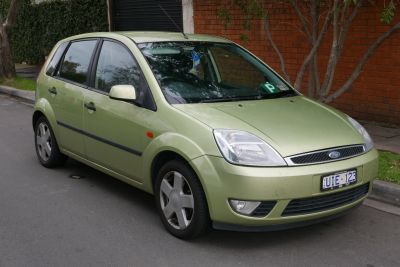
| Production: | 2001-2005 |
|---|---|
| Model Year: | 2002 |
| Length: | 3917 mm154.2 in |
| Width: | 1905 mm75.0 in |
| Height: | 1417-1463 mm55.8-57.6 in |
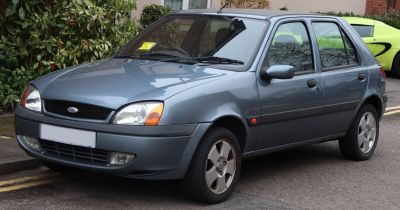
| Production: | 1999-2001 |
|---|---|
| Model Year: | 1999 |
| Length: | 3833 mm150.9 in |
| Width: | 1634 mm64.3 in |
| Height: | 1334 mm52.5 in |
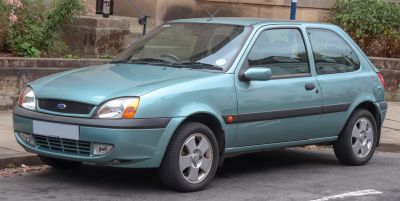
| Production: | 1999-2001 |
|---|---|
| Model Year: | 1999 |
| Length: | 3833 mm150.9 in |
| Width: | 1634 mm64.3 in |
| Height: | 1334 mm52.5 in |
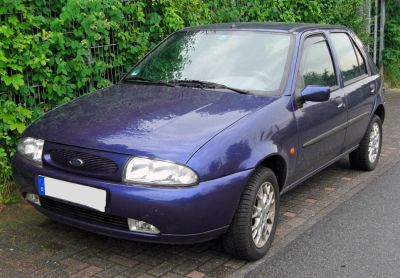
| Production: | 1996-1999 |
|---|---|
| Model Year: | 1996 |
| Length: | 3828 mm150.7 in |
| Width: | 1634 mm64.3 in |
| Height: | 1334 mm52.5 in |
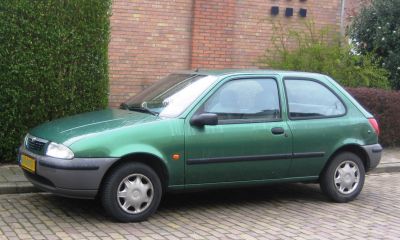
| Production: | 1996-2000 |
|---|---|
| Model Year: | 1996 |
| Length: | 3828 mm150.7 in |
| Width: | 1634 mm64.3 in |
| Height: | 1330 mm52.4 in |
